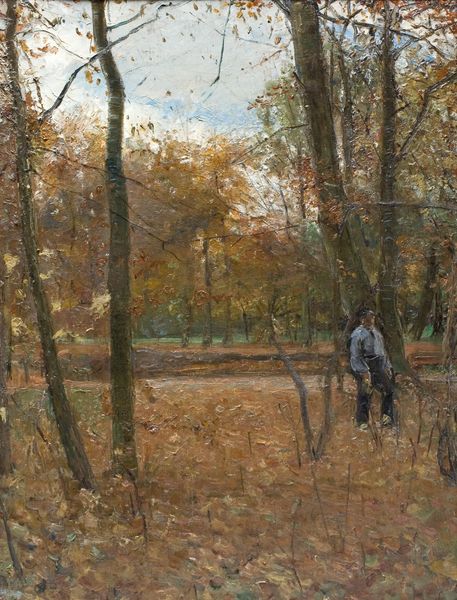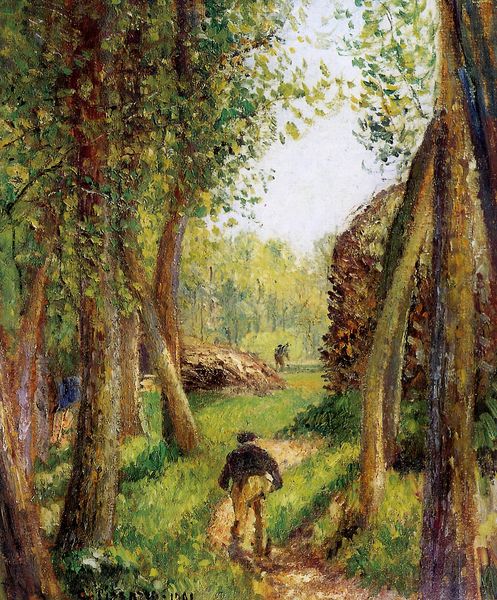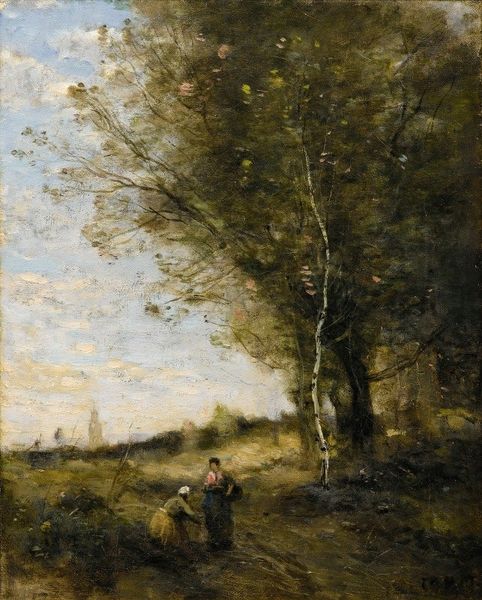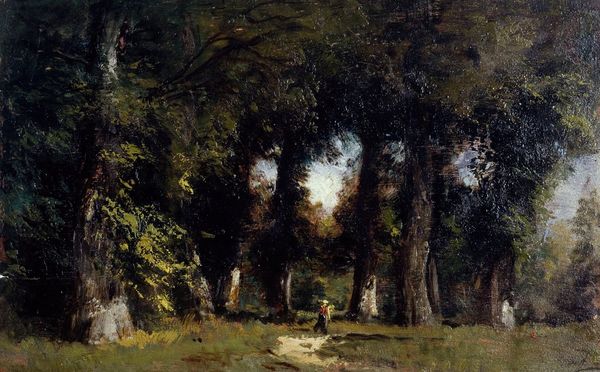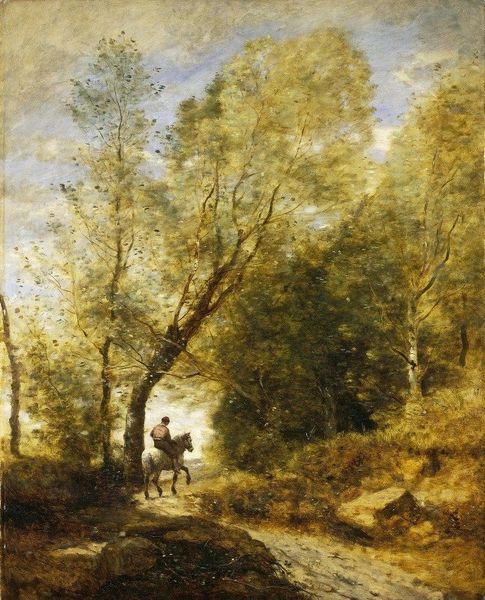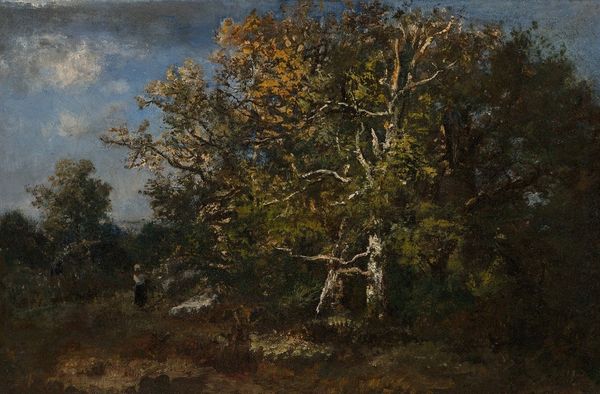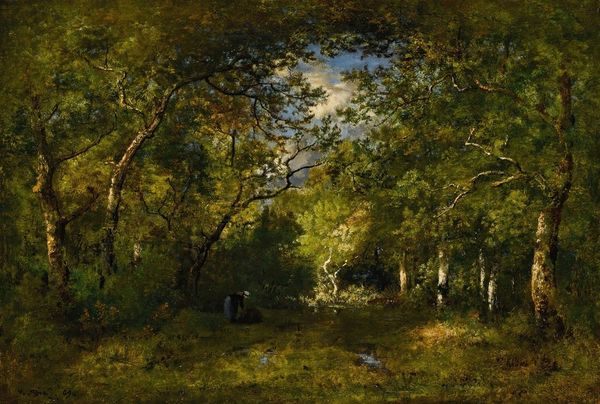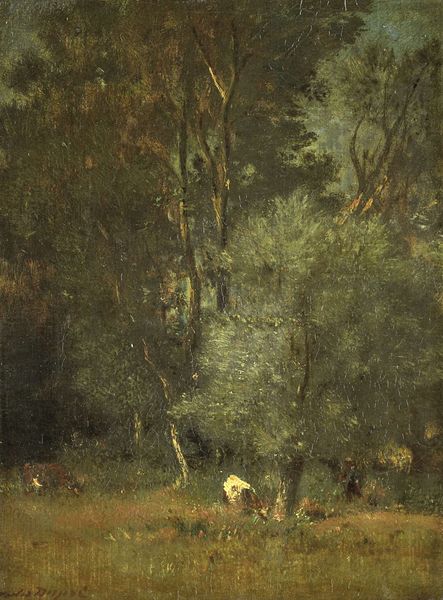
Copyright: Public Domain: Artvee
Curator: We’re looking at "Jules Le Coeur and his dogs in the forest of Fontainebleau", an oil-on-canvas painting created in 1866 by Pierre-Auguste Renoir. Editor: It evokes such a solitary feeling, even with the dogs present. A contemplative quietness, wouldn't you say? Curator: Definitely. Now, it is said Renoir worked "en plein air" to achieve this impression. Notice how light and color seem to flicker, typical of that process. I am struck by the artist's almost palpable connection to labor through material means, from preparation and pigment selection to the finished object we see before us. Editor: The light absolutely pulls me in, and I am intrigued by the symbolism here. Dogs in art often signify loyalty and companionship, themes perhaps resonating deeply in 19th-century bourgeois society. But the man himself, facing away, suggests a turning inward, maybe melancholy? Curator: Interesting. The canvas would've been hand-prepared. Consider the specific tools required – the brushes, the easel constructed from wood—all indicative of very tangible forms of work. It brings me to the means by which even naturalism becomes a produced and crafted idea, filtered through specific relations of artistic practice. Editor: And it invites questions around depictions of masculinity. Observe the hunting attire— the hat, the way he is carrying the rifle. This forest, so significant for landscape painting, becomes a stage for performances of status. We can also interpret this as representative of man’s place within and sometimes struggle against the wilderness. The forest almost swallows the figure in the composition. Curator: I agree, there is much to consider regarding the work itself, and its means of production within Romanticism's own visual logic, when analyzing how value and status were then constructed. I find thinking about the work of both the patron and maker incredibly important. Editor: It really underlines the tension between personal identity and natural symbolism so rife throughout this period. Makes me wonder what awaits them deeper within the woods, and the man within himself! Curator: Yes, seeing the raw materials as extensions of human intentions deepens my sense of art's embeddedness in society. Editor: Absolutely, reflecting on the symbolism interwoven with the figures' story really elevates my appreciation for art's rich cultural echoes.
Comments
No comments
Be the first to comment and join the conversation on the ultimate creative platform.
